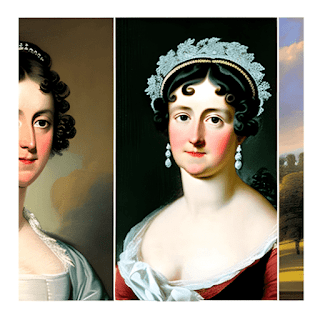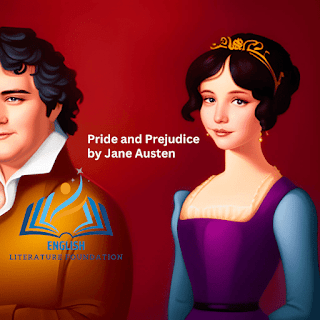A Detailed Summary of "Pride and Prejudice" by Jane Austen
If you're a fan of classic literature, then "Pride and
Prejudice" by Jane Austen is a must-read. This novel, first published in
1813, is a beloved classic that has captured the hearts of readers for
centuries. In this article, we will delve into a detailed summary of the plot,
characters, themes, and writing style of this literary masterpiece.
Table of Contents
- Introduction
- Jane
Austen - The Author of Pride and Prejudice
- Summary
of the Novel
- Chapter
1-5: The Bennet Family and the Arrival of Mr. Bingley
- Chapter
6-12: Mr. Collins, Lady Catherine, and Elizabeth's Refusal
- Chapter
13-19: The Netherfield Ball and Mr. Darcy's Proposal
- Chapter
20-25: Lydia's Elopement and the Bennet Family's Shame
- Chapter
26-32: Darcy's Intervention and Wickham's True Nature
- Chapter
33-36: Bingley's Return and Elizabeth's Realization
- Chapter
37-42: Darcy's Proposal Again and Jane's Engagement
- Chapter
43-50: Lydia's Marriage and Darcy's True Feelings
- Chapter
51-61: Elizabeth and Darcy's Reunion and Happy Ending
- Characters
in "Pride and Prejudice"
- Elizabeth
Bennet
- Fitzwilliam
Darcy
- Jane
Bennet
- Charles
Bingley
- Mr.
Bennet
- Mrs.
Bennet
- Lydia
Bennet
- George
Wickham
- Charlotte
Lucas
- Themes
in "Pride and Prejudice"
- Social
Class
- Marriage
- Pride
and Prejudice
- Writing
Style of "Pride and Prejudice"
- Irony
- Satire
- Conclusion
- Frequently
Asked Questions
Jane Austen - The Author of Pride and Prejudice
Before we dive into the summary of "Pride and
Prejudice," let's first take a moment to appreciate the brilliance of the
author, Jane Austen. Born in 1775 in Steventon, Hampshire, England, Austen was
the daughter of a rector and grew up in a literary household. She began writing
at a young age and published her first novel, "Sense and
Sensibility," in 1811.
Austen's writing style is known for its wit, humor, and
social commentary. Her novels often revolve around the lives of women in the
upper-middle-class society of Regency England and explore themes such as
marriage, social class, and gender roles. "Pride and Prejudice" is
considered one of her finest works and is beloved by readers around the world.
Summary of the Novel
"Pride and Prejudice" follows the story of
Elizabeth Bennet, the second eldest of five sisters, and her journey to find
love and happiness in Regency England. The novel is set in the fictional town
of Meryton in Hertfordshire and is told through Elizabeth's perspective.
Chapter 1-5: The Bennet Family and the Arrival of Mr. Bingley
The novel opens with Mr. and Mrs. Bennet, Elizabeth's
parents, discussing the news of a wealthy bachelor, Mr. Bingley, who has
arrived in the nearby town of Netherfield. Mrs. Bennet is excited at the
prospect of Mr. Bingley being a potential suitor for one of her daughters and
encourages Mr. Bennet to visit him.
At a local assembly, the Bennet sisters meet Mr. Bingley,
his sister Caroline, and his friend Mr. Darcy. While Mr. Bingley is immediately
taken with Jane, Elizabeth's older sister, Mr. Darcy appears haughty and
dismissive, leading Elizabeth to develop a strong dislike towards him.
Chapter 6-12: Mr. Collins, Lady Catherine, and Elizabeth's Refusal
Mr. Collins, a distant cousin of the Bennets, arrives at
Longbourn, the Bennet family estate, with the intention of marrying one of the
Bennet sisters. He sets his sights on Elizabeth, but she refuses his proposal,
much to the dismay of her mother and the amusement of her father.
Lady Catherine de Bourgh, Mr. Darcy's aunt, also makes an
appearance and disapproves of the Bennet family's social standing. Her
condescending attitude further solidifies Elizabeth's negative opinion of the
upper-class.
Chapter 13-19: The Netherfield Ball and Mr. Darcy's Proposal
At the Netherfield ball, Jane catches a cold and is forced
to stay at Netherfield, much to the delight of Mrs. Bennet. During her stay,
Elizabeth grows closer to Mr. Darcy, who reveals his true feelings towards her
in a proposal. However, Elizabeth rejects him, citing his arrogance and
mistreatment of Jane's heart as reasons for her refusal.
Chapter 20-25: Lydia's Elopement and the Bennet Family's Shame
Lydia, the youngest Bennet sister, elopes with Mr. Wickham,
a charming soldier with a shady past. The Bennet family is in uproar, and Mr.
Bennet fears that their reputation will be ruined. Mr. Darcy intervenes and
helps to locate the couple, but only on the condition that Mr. Wickham marries
Lydia.
Chapter 26-32: Darcy's Intervention and Wickham's True Nature
It is revealed that Mr. Wickham had attempted to elope with
Darcy's younger sister, Georgiana, for her fortune but was prevented by Darcy.
Elizabeth begins to see Darcy in a new light and reconsiders her feelings
towards him.
Chapter 33-36: Bingley's Return and Elizabeth's Realization
Mr. Bingley returns to Netherfield, and it is revealed that
Darcy had played a role in separating Jane and Mr. Bingley. However, Elizabeth
comes to understand that Darcy acted out of concern for his friend, who he
believed was making a hasty decision.
Chapter 37-42: Darcy's Proposal Again and Jane's Engagement
Darcy proposes to Elizabeth again, and she accepts, having
come to realize her own pride and prejudices. Meanwhile, Jane becomes engaged
to Mr. Bingley.
Chapter 43-50: Lydia's Marriage and Darcy's True Feelings
Lydia and Mr. Wickham marry, and the family's reputation is
restored. Darcy reveals that he had played a role in helping Lydia and Mr.
Wickham to marry, and Elizabeth comes to understand his true character.
Chapter 51-61: Elizabeth and Darcy's Relationship and the Happy Ending
Elizabeth and Darcy's relationship deepens, and they become
engaged. Lady Catherine de Bourgh attempts to interfere, but Elizabeth stands
her ground, refusing to give up her love for Darcy.
In the end, all the Bennet sisters find happiness and love,
with Jane and Elizabeth marrying their respective suitors, Mr. Bingley and Mr.
Darcy. The novel ends on a happy note, with the Bennet family's reputation
restored and the sisters settling into their new lives as married women.
Overall, "Pride and Prejudice" is a novel that
explores themes of social class, marriage, and personal growth. Through the
character development of Elizabeth and Darcy, Jane Austen presents a commentary
on the societal norms of her time and challenges the idea that one's worth is
determined solely by their social status.
Furthermore, the novel showcases Austen's skill in crafting
witty and engaging dialogue, as well as her ability to create complex and
relatable characters. "Pride and Prejudice" has become a beloved
classic of English literature, and its enduring popularity is a testament to
its enduring themes and engaging storytelling.
Characters in "Pride and Prejudice"
- Elizabeth
Bennet - The novel's protagonist and second oldest of the Bennet sisters.
She is intelligent, independent, and outspoken, and her wit and sense of
humor are a defining aspect of her character.
- Fitzwilliam
Darcy - A wealthy and proud man who initially comes off as aloof and arrogant,
but later reveals a softer side to Elizabeth.
- Jane
Bennet - Elizabeth's older sister, who is gentle and kind-hearted. She
falls in love with Charles Bingley.
- Charles
Bingley - A wealthy and amiable gentleman who falls in love with Jane
Bennet.
- Mr.
Bennet - The patriarch of the Bennet family, who is sarcastic and enjoys
teasing his wife and daughters.
- Mrs.
Bennet - A social-climbing and hysterical woman who is obsessed with
marrying off her daughters to wealthy men.
- Lydia
Bennet - The youngest Bennet sister, who is immature and impulsive. She
elopes with George Wickham, causing a scandal.
- George
Wickham - A charming and deceitful man who has a troubled history with
Darcy.
- Charlotte
Lucas - Elizabeth's friend, who marries Mr. Collins for financial security.
Themes in "Pride and Prejudice"
- Social
Class - The novel explores the rigid social hierarchy of the Regency era
and how it influences relationships and marriage prospects.
- Marriage
- Marriage is a central theme of the novel, and the characters' attitudes
towards marriage reflect the societal expectations of their time.
- Pride
and Prejudice - The novel examines how pride and prejudice can prevent
people from seeing the truth and cause misunderstandings and conflicts.
Writing Style of "Pride and Prejudice"
- Irony
- Jane Austen uses irony throughout the novel to satirize societal norms
and comment on the characters' actions and attitudes.
- Satire
- The novel is a satirical commentary on the social norms and expectations
of Regency England.
Frequently Asked Questions (FAQs)
- What
inspired Jane Austen to write "Pride and Prejudice"?
- Jane
Austen drew inspiration for "Pride and Prejudice" from her own
experiences and observations of society during the Regency era.
- Why is
"Pride and Prejudice" considered a classic of English
literature?
- "Pride
and Prejudice" is considered a classic of English literature due to
its enduring themes, engaging characters, and expertly crafted dialogue.
- What
message does "Pride and Prejudice" convey about society and
social norms?
- "Pride
and Prejudice" challenges the societal norms of its time,
particularly those related to social class and marriage, and promotes the
idea that one's worth is not determined solely by their social status.
- What
makes Elizabeth Bennet a compelling protagonist?
- Elizabeth
Bennet is a compelling protagonist due to her intelligence, wit, and
strong sense of self. She is a relatable and complex character who
undergoes personal growth throughout the novel.
- How
has "Pride and Prejudice" influenced popular culture?
- "Pride
and Prejudice" has had a significant influence on popular culture,
with numerous adaptations, spin-offs, and references in literature, film,
and television.
Conclusion
In conclusion, "Pride and Prejudice" by Jane
Austen is a timeless novel that continues to captivate readers today. Through
her vivid characters and witty prose, Austen examines themes of social class,
marriage, and the consequences of pride and prejudice. Her use of irony and
satire provides a sharp critique of Regency society and its expectations, while
also providing a commentary on the human condition. Overall, "Pride and
Prejudice" remains a beloved work of literature that is as relevant today
as it was when it was first published in 1813.


